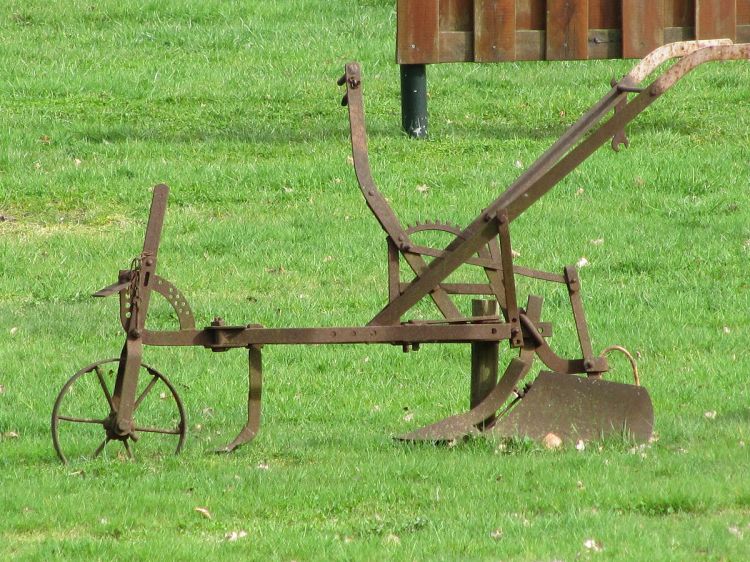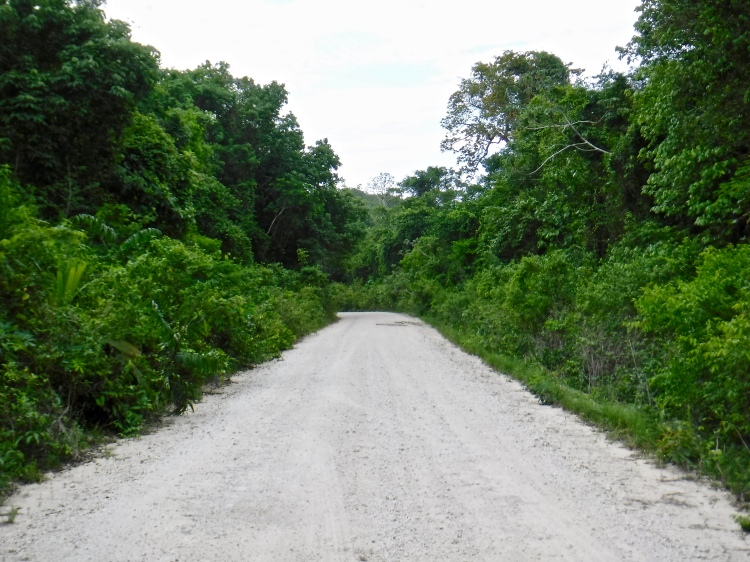This post continues the retelling of my recent time in Belize: participating in an archaeology field school and learning about jaguar conservation. The remainder of this series is located in the “Travel” category of this blog.

As I mentioned in the previous installment in this series, June 6, 2017 was too eventful for one post. After we returned to Texas Camp following an exciting day in the field, there was a talk to attend. Dr. Brokaw, who has extensively studied the forests in the Rio Bravo Conservation and Management Area, was giving a presentation about the ecology of the jungle we now called home.
We gathered in the dining hall at 7 pm. Dr. Brokaw began by mentioning a controversial book that was published in 2015: The Maya Forest Garden by Anabel Ford and Ronald Nigh. This book challenged the dominant theories about the decline of the Classic Maya.
A common line of thought is that the decline of the Classic Mayan civilization was largely the result of environmental degradation. The expansion of Mayan urban centers led to increased deforestation, which had ecological implications (e.g. more severe droughts) that negatively affected the Maya.
Ford and Nigh (2015) contested this. They pointed out that the agricultural practices of the Classic Maya were quite different from those of Europeans. This means, according to Ford and Nigh (2015), that there was much less deforestation during the age of the Classic Maya than has traditionally been supposed.

Ford and Nigh (2015) also argued that many of Central America’s jungles are actually “forest gardens.” They noted that these forests contain high proportions of trees that would have been useful to the Classic Maya. Ford and Nigh (2015) claimed that the Maya likely planted these trees, and that they became “feral” after the Maya declined.
Dr. Brokaw agreed that deforestation in some parts of the Mayan world was possibly not as severe as researchers previously believed. But he was critical of some of Ford and Nigh’s (2015) conclusions.
First of all, deforestation did occur as Classic Mayan settlements grew. Ancient pollen data attests to this, as does evidence of increased erosion. But deforestation might have been patchy, with forests being more intact in certain locations than in others. Then there is the forest garden hypothesis.

Dr. Brokaw said it is perfectly normal to have “skewed tree abundance.” In the Rio Bravo Area, for instance, the distribution of trees is largely controlled by environmental factors. As the slope of the land changes, so too does the moisture and nutrient content of the soil. Tree species tend to clump in areas where the topography and soil create the best conditions for them.
What this means is that the abundance of tree species useful for humans in parts of Central America cannot necessarily be attributed to the Classic Maya: there may be environmental influences that play a bigger role.
However, the Classic Maya certainly left an ecological legacy. The soil and topography of the Rio Bravo area still bears their mark – and these factors help determine the distribution of tree species. So while Dr. Brokaw does not entirely buy Ford and Nigh’s (2015) feral garden idea, he does agree that the Classic Maya influenced the character of modern-day forests.
Dr. Brokaw talked about other aspects of the Rio Bravo Conservation Area too. He noted that we were technically in a “subtropical moist zone,” as determined by annual rainfall levels. Dr. Brokaw also considers most of the forests in the Rio Bravo area to be old growth. They have almost entirely grown back after the decline of the Classic Maya, and more recent disturbances have not been significant enough to classify most of the forest as secondary.

I found Dr. Brokaw’s talk to be extremely fascinating. Unfortunately, the evening of June 6 was not all fun and games: I learned of the presence of a usurper.
As I was brushing my teeth at our communal hand-washing station, a student from the University of Texas at Austin asked me about my experiences in Mongolia. I have never been to Mongolia. Apparently, there was another person named Josh in camp who had a shaved head – just like me. I knew that I had to find this challenger, as Texas Camp was not big enough for the both of us.
Further Reading:
Brokaw, V. L. N., & Mallory, E. P. (1993). Vegetation of the Rio Bravo Conservation and Management Area, Belize. Manomet, Massachusetts USA: Manomet Bird Observatory. Available at https://mayaforestbelize.files.wordpress.com/2016/11/vegetation-of-rio-bravo3.pdf.
Ford, A., & Nigh, R. (2015). The Maya forest garden: Eight millennia of sustainable cultivation of the tropical woodlands. New York, NY: Routledge.
Death to the Usurper!! Well, not death but a stern talking to!!!
LikeLiked by 1 person
Haha, the “usurper” section of the first draft of this post was actually quite strongly worded…but I decided to tone things down a bit. Not everyone gets sarcasm, especially over the internet.
LikeLiked by 2 people
haha, I’m not very good at detecting sarcasm and if I didn’t know you, I’d think you were serious in your last paragraph. makes me wonder how that first draft sounded :D
also, I loved to read the infos you shared in this post! I really like the mixture of personal insights and science you have on your blog. :)
(btw I hope my sudden flood of comments doesn’t bother you :D)
LikeLiked by 1 person
Haha, your flood of comments doesn’t bother me at all! I always like to hear from you.
The first draft was much more combative! It may or may not have included the line, “I needed to find this challenger and destroy him.” :P
LikeLike
I’ve been neglecting the whole blogging thing a bit, but I think I’m going to spend more time here again :)
hahah okay, my sarcasm radar definitely could have identified ‘destroy’ as not very serious :P
LikeLiked by 1 person